I don’t recall why I was at the airfield that day. We often escorted convoys from the main American compound in Mogadishu to the airfield. Sometimes we had to go in with just a few vehicles to pick up supplies or personnel. Unless I was otherwise occupied, I always liked to explore around a bit as I waited for whatever business was at hand to be conducted.
One day we arrived and were greeted by an unusual sight. The United Nations had leased (or borrowed… I’m not sure) various helicopters from former Soviet nations to use for their purposes. All were painted white, with the big letters “UN” on the sides to make sure everyone knew who was flying them – and please don’t shoot at us.
While the flight line was always busy with American Blackhawk and Cobra helicopters, a giant now occupied the area near what had once been the terminal area. I knew it was of Soviet origin, but I wasn’t quite sure what it was called. While the a few of the folks on my team attended to whatever our trip called for, I wandered over to this behemoth.
Another American, this fellow from the Air Force, was standing nearby. I asked him if he knew what it was. He identified it as a Mil Mi-26. “Can I take a look?” Sure, he said. Just don’t touch anything.
A Beached Whale
As I drew nearer to the behemoth, I was astounded by its size. From nose to tail it seemed longer than a C-130… an airplane I was very familiar with as a paratrooper. Walking up alongside, the blades overhead towered above me. I later found out that the rotor span was well over 100 feet – just massive. The giant tail rotor seemed as though it were big enough to fit on one of the Blackhawks parked further along the ramp.
The aviation enthusiast in me was awed. While I’d been around many helicopters, including larger American models, nothing compared to this. Though it had a feeling of familiarity, it still seemed so very foreign. It was as though the giant white airframe was out of an alternate universe. In a way, I suppose, given the times we were then emerging from, it was in many ways.
I continued to quietly walk along, looking at every detail. Occasionally I reached up just to touch its surface, the warning not to still fresh in my ears. I knew the likelihood of me being this near to such a machine would probably not happen again. Despite the fact that I knew it was just aluminum skin, the need to touch it seemed driven more as a way to affirm that it was actually real, and not a mirage.
Finishing The Falke
After getting the Ma. K Falke painted, I moved on to decals and weathering.
A gloss coat of Future (Pledge) was applied to the model. Normally I’m not a big fan of Hasegawa decals. On aircraft, they have always been a bit thick. However, these were of much better quality. The decal set had a cool shark mouth that I considered applying, but I wasn’t sure it would fit over the various lumps and bumps on the forward nacelles. Thus, I limited it to some ID numbers, various stencils, and some artwork just under the pilot’s hatch. Those decals actually came from the Mk. 44 Ammoknight.
Generally after adding decals to a model I give it another gloss coat. This seals the decals in, and prepares the surfaces for an oil or enamel based panel line wash. The wash can be applied, excess wiped off, and the rest of the weathering then goes over the top.
However, I wanted this airframe to be a bit grimy. Not grimy like a tank, but rather like an airplane which has seen cycles of wind, rain, and dust… and operation temp has not allowed it to be wash.
A Different Approach
I switched things up a bit by giving the model an acrylic satin coat. This would seal in the decals, but also give it a more “grippy” surface., which I could then take advantage of that in weathering.
I followed that up with a sort of “grime filter”, using thinned dark brown enamel wash. The ratio of wash to thinner was about 50/50. Instead of layering it on evenly as a traditional filter, I stipled it on with a large brush. This allowed the wash to flow around a bit, picking up the slight texture the stain finish left behind. In some areas I applied it heavier, in some not so much.
The end result was a surface that I felt really looked the part – well used and a bit dusty and dirty.
For the panel lines, I decided to leave the airframe unglossed. Using Mig Productions Dark Wash, I applied the enamel (slightly thinned) along panel lines and around raised detail. Because of the satin finish, some of the wash “bled” in ways that would need addressing. (And that was my intent!)
One the Dark Wash dried a bit, I used a small brush, damped with odorless thinner, to blend away any excess. This helped contribute to the grimy look. I didn’t try to completely remove it, but rather work it in… feathering edges, smearing it around… until I was able to make it look like dirt, leaks, stains, or whatever.
Back To The Usual
After allowing for reasonable drying time, I followed up with airbrush fading and shading. I have long been a fan of post-shading, as I feel it gives far more control than pre-shading, and allows for more flexibility on camo jobs with multiple colors.
The process was started with a post-fade of highly thinned Tamiya XF-55 Deck Tan. I thinned it about 90/10 thinner to paint, using 91% isopropyl alcohol. This combo works very well, as the alcohol evaporates quickly. I applied this all over the airframe using a random “scribble” motion.
A post-shade followed, using a 2-1 mix of Tamiya Nato Black and Hull Red. I darkened panel lines, recesses, and introduced some exhaust and stain effects in a few places.
Over the top of that, a light application of Vallejo Mecha Color Chipping Brown was applied, first with a sponge, and then in a few places with a brush. This represented deeper chips that had oxidized in some form. I then switched to a Prismacolor Silver pencil for more chipping, to represent fresh scuffs that went to bare metal.
Overall, I kept the chipping fairly restrained except for just a few areas that seemed likely to be worn down a bit.
Final Weathering Bits
All of this was followed with smaller drips, streaks, dots, and splatters of oil and acrylic weathering products. None were very dramatic. My intent at this point was simply to add touches of realism that would show primarily on close inspection. I felt the scale of the model (1/20th) invited these more subtle touches.
I’d already weathered the engine to a fair state of completion. I added a few final washes and splatters for a bit of a grimy look. Highly thinned clear Tamiya paints were airbrushed on to add some heat effects to the exhaust nozzle, using purple, blue, and orange. I was a little too subtle with the purple and orange, as they are only visible in a certain light viewed up close. Still, I was happy enough with the overall effect that I called it all well and done.
Time To Go
Eventually, the guys I worked with concluded their business, and it was time to depart. One of my friends wandered over. “Time to go. Let’s mount up.” I nodded to him, but looked back at the helicopter that towered over us. I was having trouble leaving its orbit – yet he seemed to barely notice its presence.
“Can you believe the size of this thing?” I waved my arm a bit, almost as if to underscore its immensity. He looked at it, almost as if it was the first time he’d’ even seen it. He gave a brief head nod. “What is it?”
Applying my newly found knowledge, I said “It’s a Soviet Mi-26.” He blinked at me, then at the helicopter, and turned to head back to our vehicles. “Oh. Cool. Anyway… we gotta go.” He walked off. I stayed for a moment, trying to etch it all into my memory.
Take A Second Look
The Falke looks… different. It’s an imaginary scifi vehicle, the original being made from a wide range of parts, both from modeling and non-modeling sources. I will have to admit, for years I’d seen it, and had the same impression my friend did looking at the Soviet bird – “Oh. Cool.” And then I’d move on.
Only as I’ve started getting into building scifi have I started to appreciate the shapes and forms and colors of models I used to barely pay attention to. I realize now I missed out on a lot. The genre has such a rich depth to it. Hasegawa’s Falke is a shining example of it. The kit is one of my favorite builds ever. It’s not the best fitting thing I’ve glued together, nor the most detailed. But it is such a satisfying build that I regret not getting to it sooner.
Say Goodnight Gracie
We mounted up in our Humvees. I took my place in the hard topped vehicle’s turret opening, where I could have a good all around view. As we moved off of the airfield, back out into city, I watched it as long as I could. Despite its size, buildings and trees quickly obscured it. It vanished almost like a dinosaur.
While I did see it at the airfield a few more times, I never had the chance to get up close to it again. To this day, I have never encountered another. My feeling at the time was correct – it was a once in a lifetime occurrence.
Happily, building more Maschinen Krieger Falkes won’t be so rare. While it won’t be soon, I’ve already started planning another build, taking lessons learned and ideas from this one to gather notes for the next.
If you’re looking for something different to build, I’d suggest considering this kit. It has qualities to it that should appeal any modeler from any genre.
But though it has an oddly familiar look, it retains enough mystery to give a certain sense of awe about the whole thing.



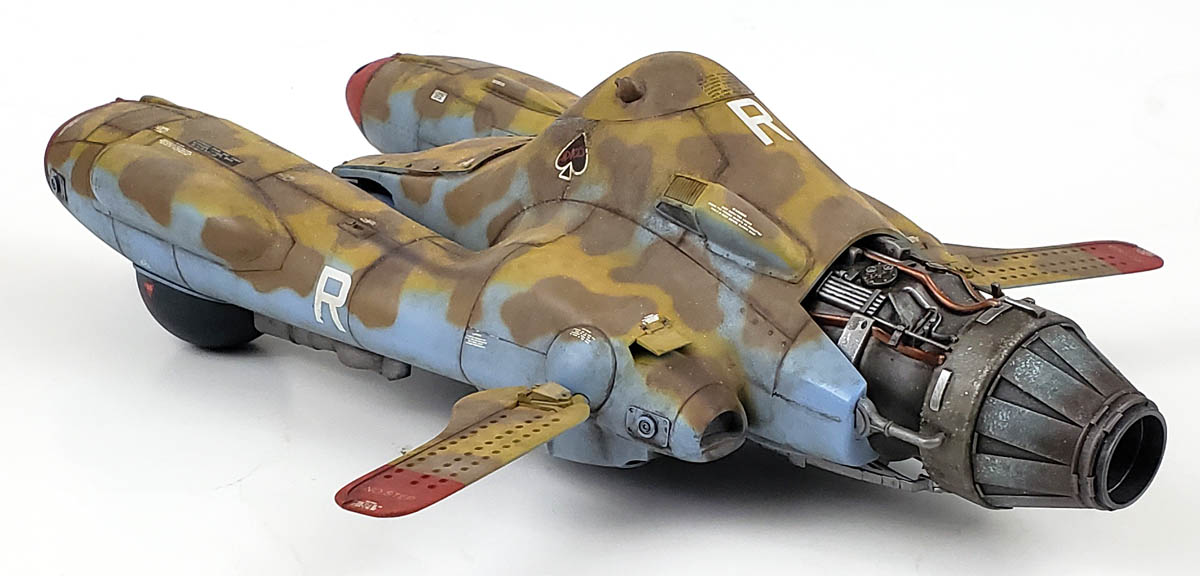


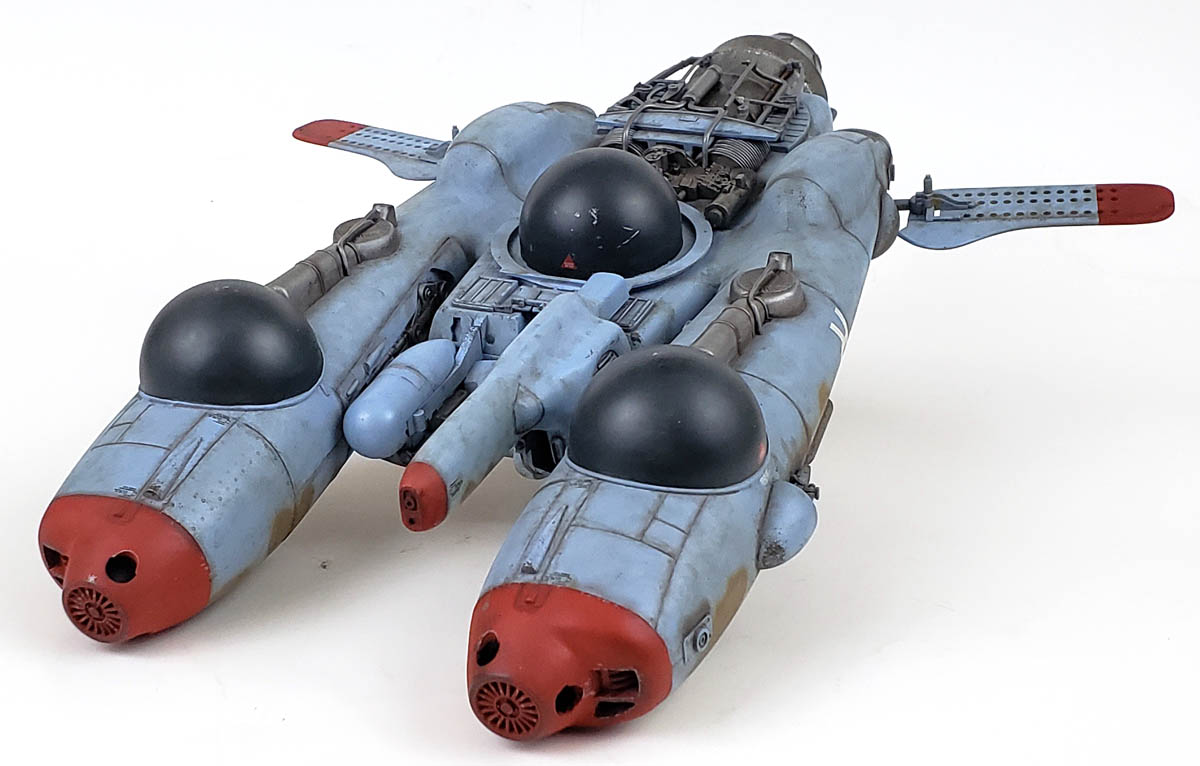



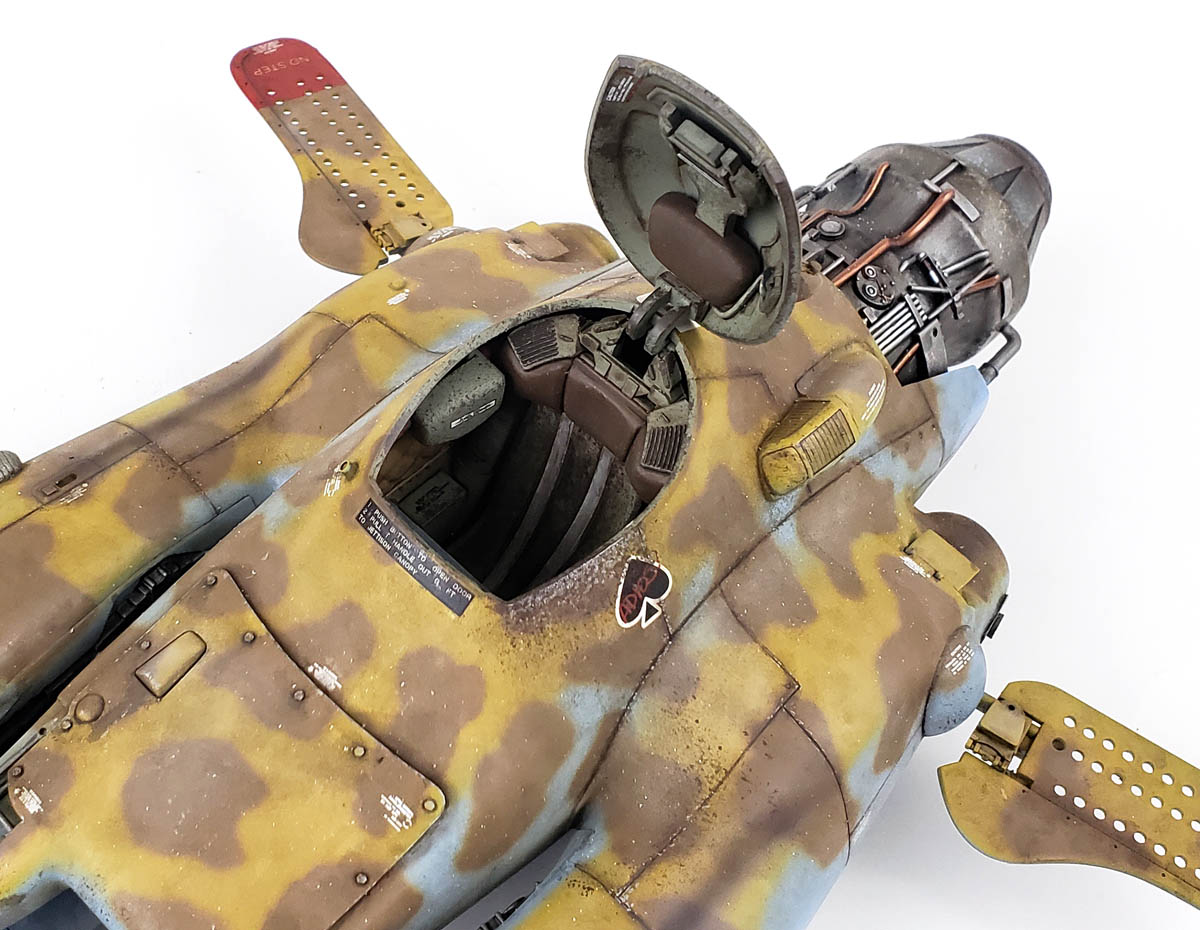
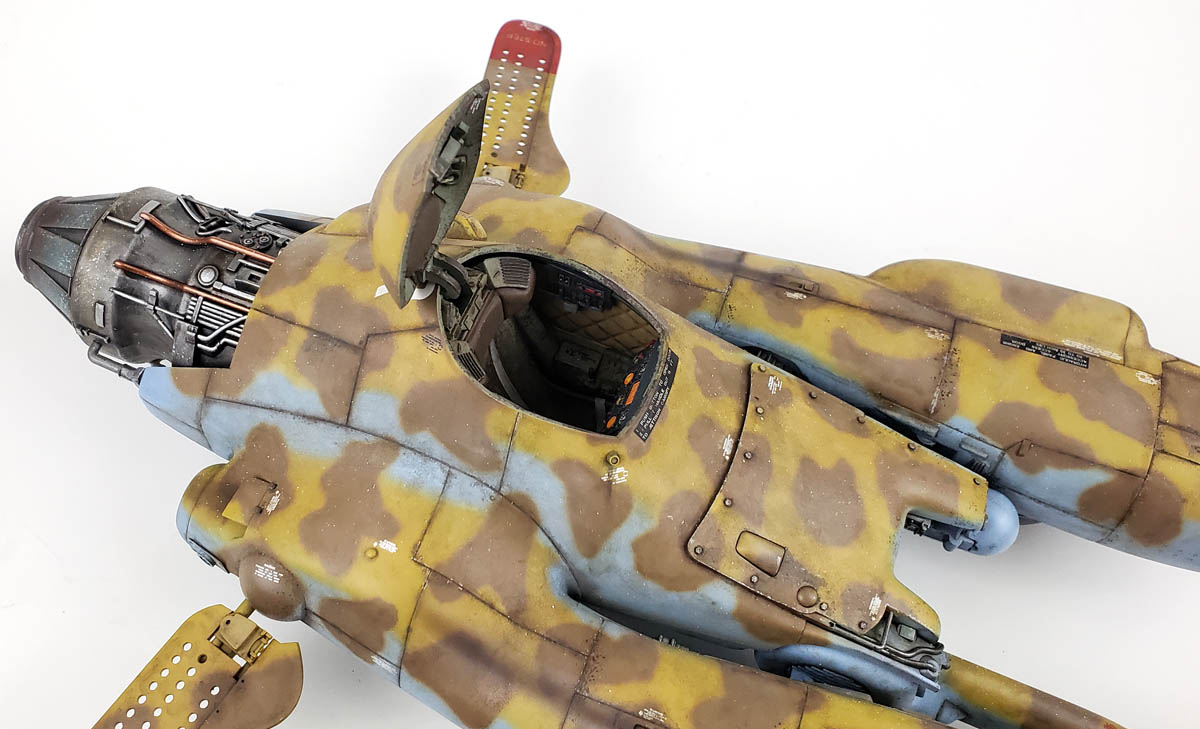
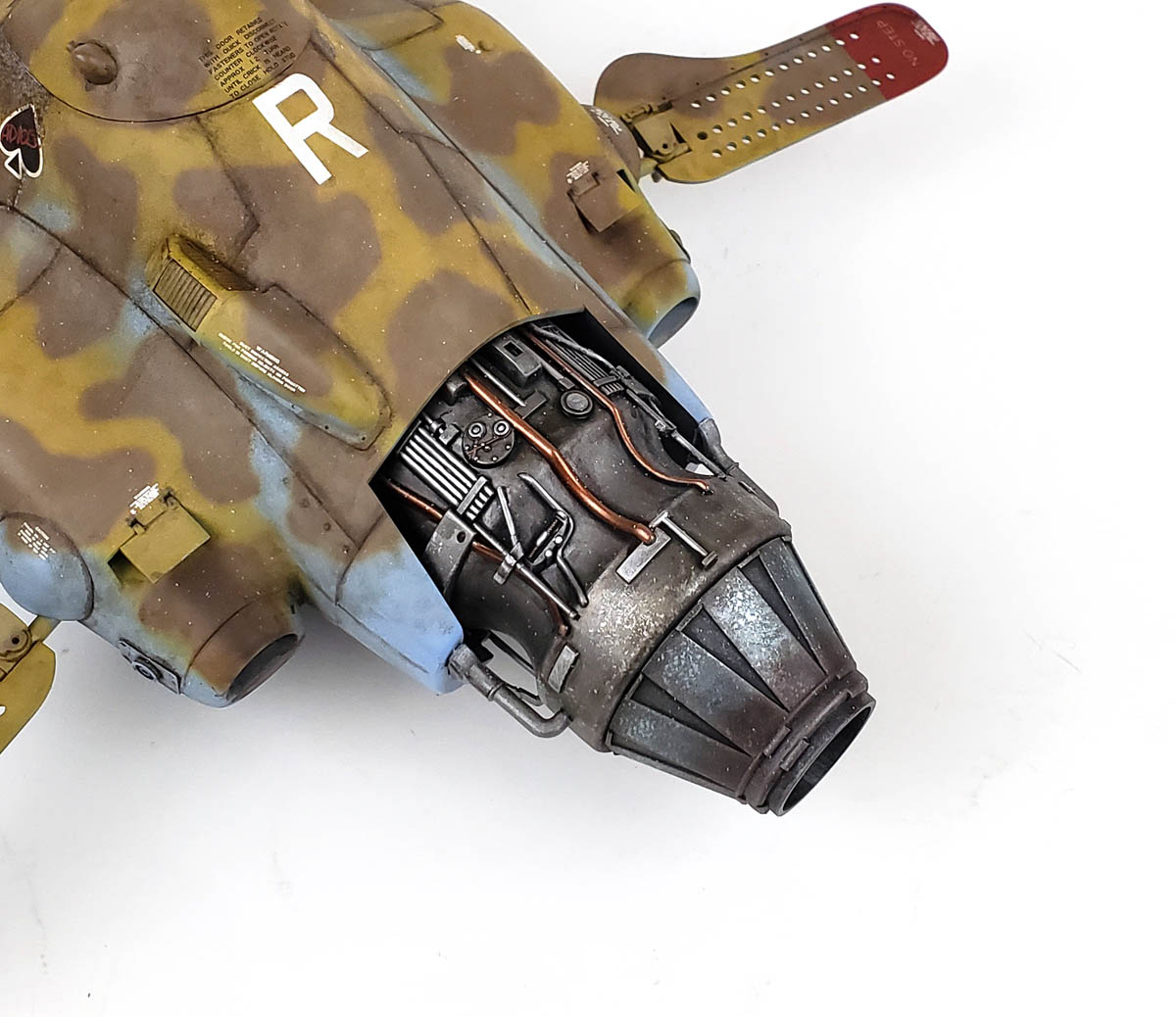



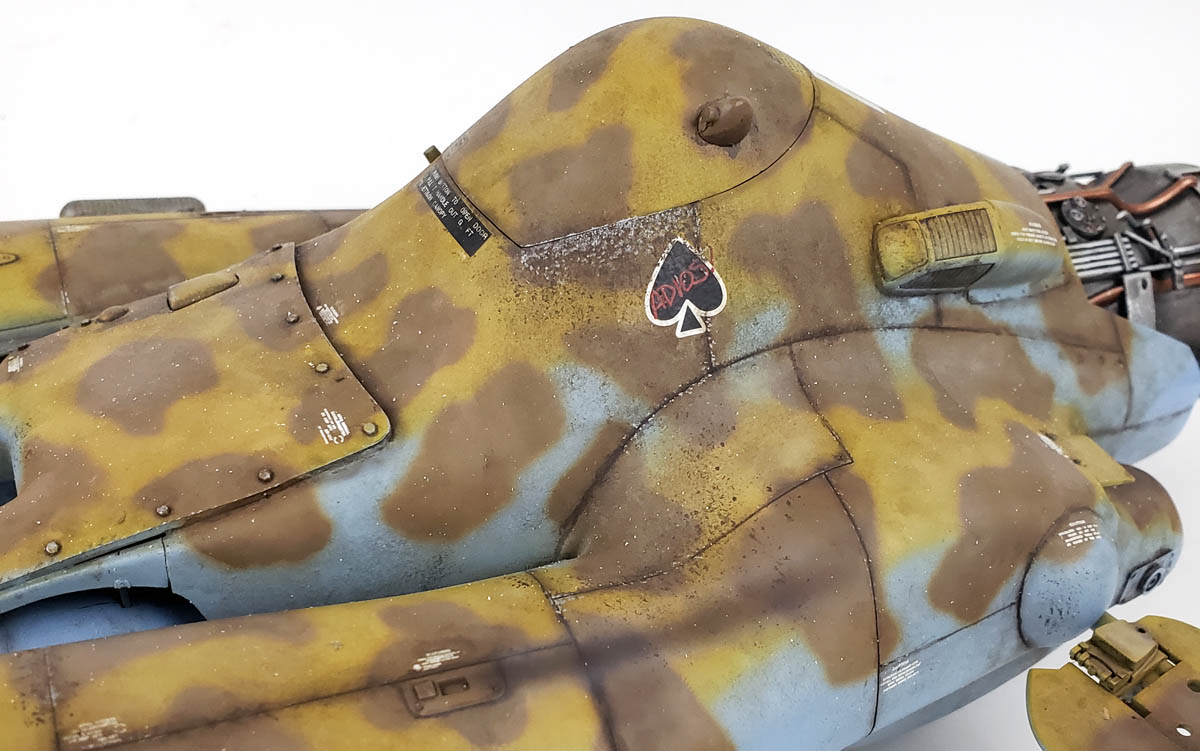


Leave a Reply